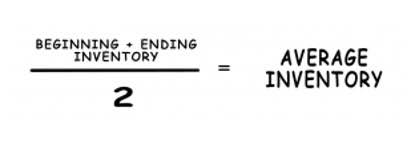
However, finding the right accounts payable automation system can seem daunting. MHC NorthStar offers best-in-class technology to manage your AP processes and make all documents—especially those necessary for three-way matching—easy to access. On top of this organization, MHC’s NorthStar supports straight-through processing. That way, employees only look at problematic documents or high-value invoices, i.e., the ones that are most in need of their attention. The most basic definition of 3-way matching is a comparison of data across three documents to make normal balance sure that all of the relevant information matches.
e-Invoicing Portal
The choice of method depends on the business’s requirements and its acceptable level of risk. Transform your 3 way Matching process into an autonomous, predictive, and superefficient finance function with the award-winning accounts payable automation solutions from Serrala. Communication between the purchasing department, receiving department, and accounts payable staff is essential for a successful 3 way match. Ensure that these departments collaborate effectively to resolve discrepancies.
- The goal of this approval process is to ensure that each invoice is consistent with the products and amounts ordered, as listed on the purchase order.
- With 3-way matching, you’ll be much more likely to notice those erroneous invoices or payment requests that spontaneously list a different bank account.
- Someone from the accounts payable team must review three documents for each invoice.
- And once everything has been found, your A/P team will still need to meticulously compare the relevant details across several documents, whose layouts will vary with each new supplier.
- Four-way matching goes a step further than three-way matching by comparing invoices with inspection slips.
- Learn how AP automation enhances the efficiency, accuracy, and financial visibility of your accounts payable workflows.
MHC AP Automation Buyer’s Guide

3-way matching is most useful when tracking physical goods, where verifying delivery before payment is essential. It also plays a key role in tightening financial controls, helping businesses catch duplicate payments and stay audit-ready. When accounts payable managers are overwhelmed with manual matching tasks, payments can get delayed. Late payments bring the risk of losing early payment discounts, incurring late fees, or even what is a 3 way match in accounting straining their working relationships with key vendors. One of the most valuable aspects of 3-way matching is the control it provides over the payment process.

Automated 3-Way Matching with AP Automation Systems
A 3-way match in accounts payable (AP) highlights the discrepancies or inconsistencies between any of the above-mentioned documents. When discrepancies are discovered in three-way invoice matching, the payment will be withheld until the discrepancy is resolved. Enhanced supplier relationships and streamlined communication are outcomes of the efficiency brought by automation.
The 3 Way Matching Process
The accounts payable department can automate the three-way matching process with an accounts payable system or perform the process manually. Manual three-way matching is a very time-consuming process and becomes even more strenuous as your company grows. Documents may be Insurance Accounting incomplete or misplaced, AP clerks might make mistakes when comparing details, and the volume of documentation to sort, verify, and file can be too much for the department to handle.
- The purpose of this matching process is to confirm that all three documents align.
- Discover how Procurify’s AP automation tools can help streamline your workflow, reduce manual tasks, and improve financial visibility.
- Read on to learn the definition of 3-way matching in accounts payable, understand how it works, and how to apply its benefits for businesses.
- Learn more about how your business can benefit from accounts payable automation.
The 3-way match process ensures that the invoice is not paid until the goods receipt note is complete, with notes on any mismatches between the purchase order and the receipt. Any details that do not match between these documents flags the system for review, so that a member of the accounts payable department can follow up on the differences before issuing payment. Businesses that rely on an automated system for invoice processing and payment need additional steps to verify accuracy as a way to avoid making a payment that is too high or too low. For busy accounts payable departments, increasing efficiency and accuracy is paramount. Inaccurate invoices can lead to extra time spent processing, as well as overpayment.
Automation reduces manual errors, speeds up processing time, and enhances operational efficiency. Implementing an end-to-end digital workflow ensures transparency, reduces delays, and allows better tracking of transactions. Organizations should invest in cloud-based solutions that integrate with ERP systems to streamline operations. To streamline accounts payable, you need to eliminate bottlenecks, standardize approvals, and automate repetitive tasks.

However, they could be paying too much or too little for the goods and services rendered, as they have no way to cross-check the receiving information. Traditional PO matching follows either a 2-way match (matching invoices to purchase orders) or a 3-way match (matching invoices to POs and receipts). 3-way matching is the gold standard for preventing financial loss in AP because it ensures companies only pay for what was ordered and received. With Peakflo’s automated matching, your business can save time, reduce errors, and spot issues before they become bigger problems.
The P2P accounting process reduces these errors by automating tasks like matching invoices with purchase orders. This system also helps prevent fraud by making sure that only approved payments go through, reducing the risk of unauthorized transactions. Invoice matching is a key process in accounts payable that ensures accuracy and efficiency in financial workflows.
